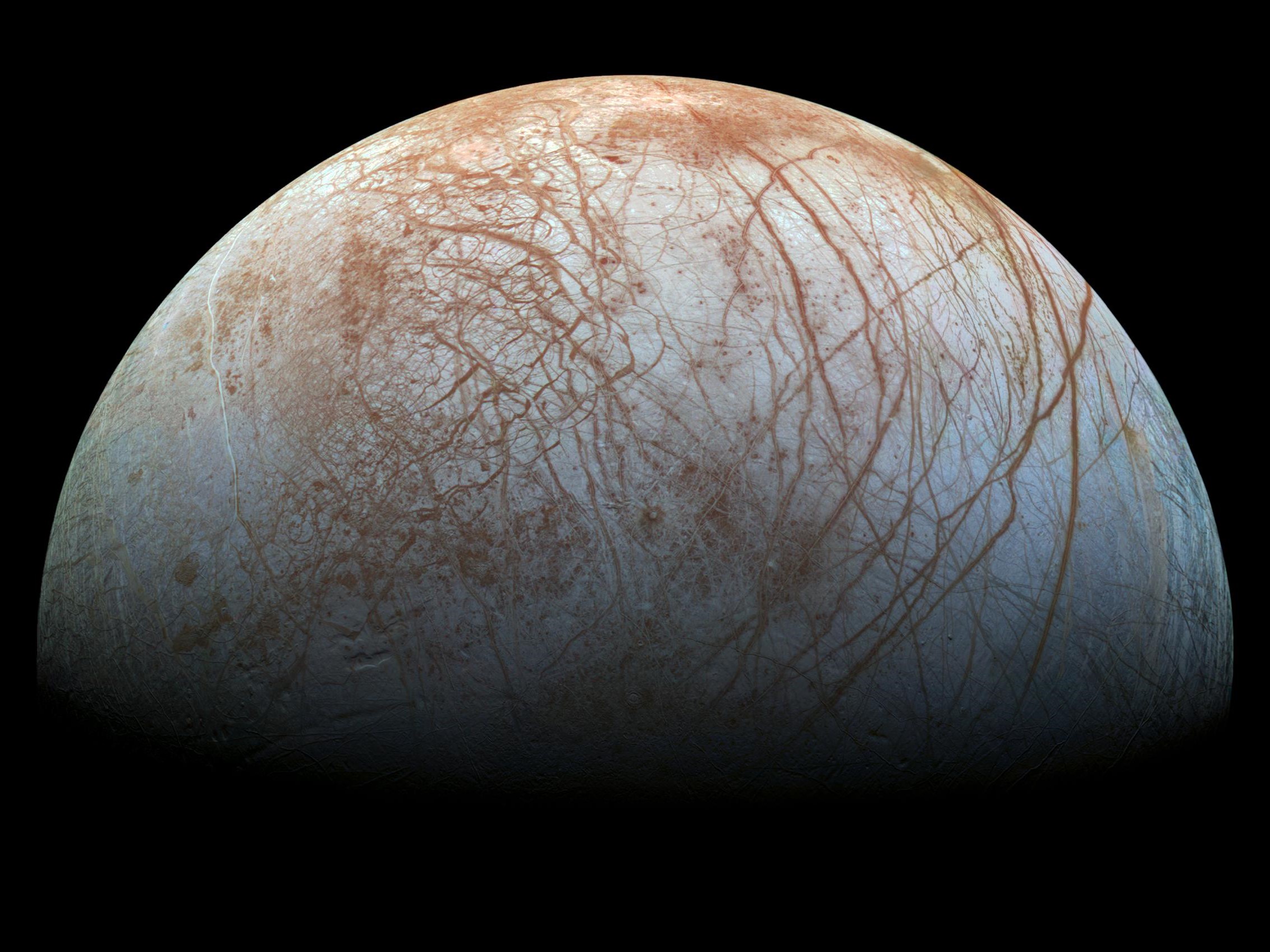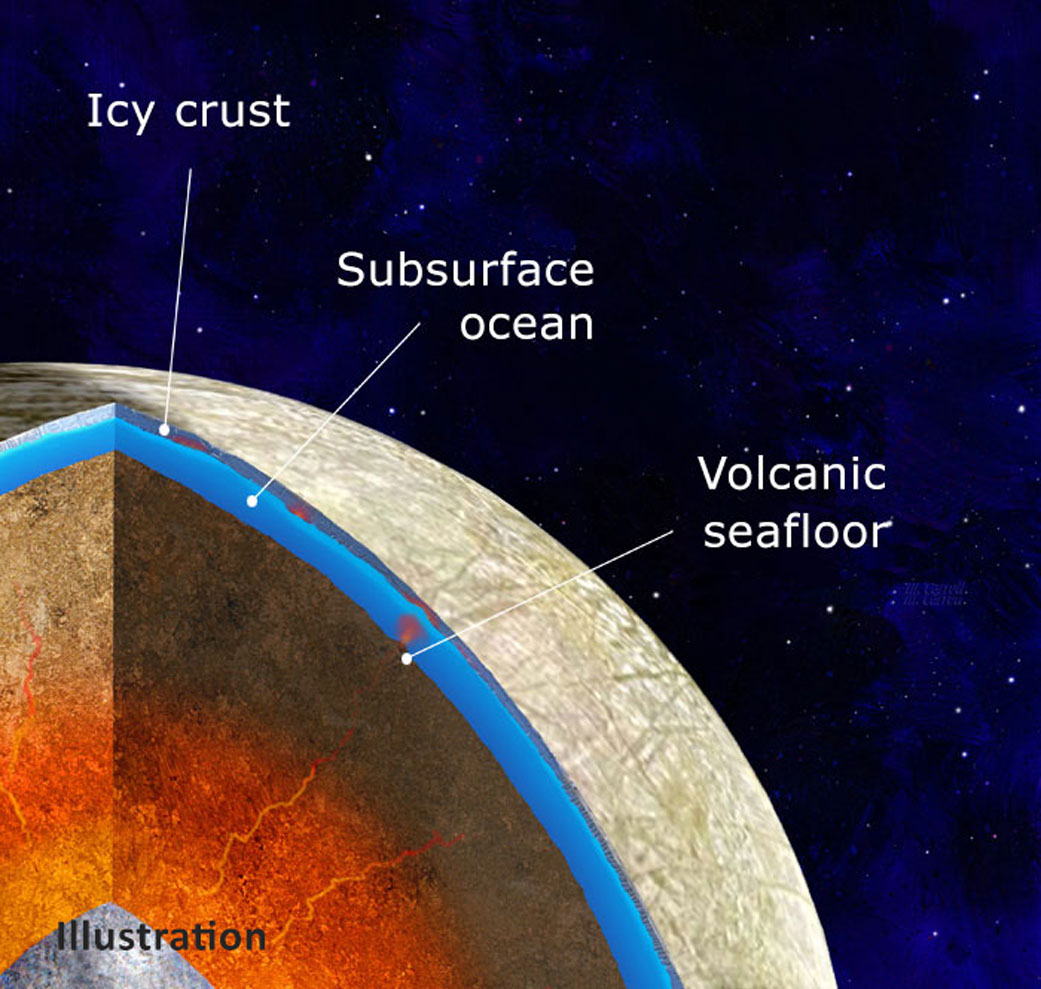
The Jupiter moon Europa may be an even more promising abode for life than scientists had thought.
A recent study suggests that active volcanoes may lurk on the seabed of the 1,940-mile-wide (3,120 kilometers) Europa, which harbors a huge ocean of salty water beneath its icy shell.
Such volcanoes could power deep-sea hydrothermal systems, environments rich in chemical energy that potential Europa lifeforms could exploit, researchers said.
Photos: Europa, mysterious icy moon of Jupiter

"Our findings provide additional evidence that Europa's subsurface ocean may be an environment suitable for the emergence of life," study lead author Marie Běhounková, of Charles University in the Czech Republic, said in a statement.
"Europa is one of the rare planetary bodies that might have maintained volcanic activity over billions of years, and possibly the only one beyond Earth that has large water reservoirs and a long-lived source of energy," she added.
Běhounková and her colleagues modeled in detail how Europa's interior stretches and flexes as the moon is tugged by Jupiter's powerful gravity. Such deformation generates frictional heat, which keeps Europa's buried ocean from freezing over — and perhaps even partially melts the upper layer of the moon's rocky mantle, the researchers reported in the study, which was published in December in the journal Geophysical Research Letters.
Get the Space.com Newsletter
Breaking space news, the latest updates on rocket launches, skywatching events and more!
Such melting may have fueled seabed volcanoes for most of Europa's history, perhaps even to the present day, the new study suggests. Volcanic activity is most likely near Europa's poles, where the internal heat loads are most intense, the scientists found.
Volcanoes on a Jovian satellite would not be unprecedented. One of Europa's fellow Galilean moons, Io, is the most volcanically active body in the solar system, and its eruptions are fueled by the same type of gravitational tugging that Europa experiences. (Io's interior flexes more dramatically, however, because it orbits closer to Jupiter than Europa does.)
In a decade or so, researchers should be able to test and supplement such Europa modeling work with a wealth of new data, thanks to NASA's Europa Clipper mission.
Clipper is scheduled to launch in 2024 and arrive in orbit around Jupiter in 2030. The probe will then make about 50 close flybys of Europa over four Earth years, characterizing the moon's subsurface ocean, studying its icy shell and scouting out good touchdown sites for a future life-hunting lander, among other tasks.
Some of Clipper's observations could help researchers determine if volcanoes do indeed burble on Europa's ocean floor, temporarily lighting up the deep-sea dark with orange-red flashes of molten rock.
"The prospect for a hot, rocky interior and volcanoes on Europa's seafloor increases the chance that Europa's ocean could be a habitable environment," Europa Clipper project scientist Robert Pappalardo, of NASA's Jet Propulsion Laboratory in Southern California, said in the same statement. "We may be able to test this with Europa Clipper's planned gravity and compositional measurements, which is an exciting prospect."
Scientists also suspect that hydrothermal vents may exist on the Saturn moon Enceladus, which is, like Europa, an ice-covered ocean world. But there are no Enceladus missions on the books at the moment, so we may have to wait a while to get deep answers about that intriguing, geyser-spewing moon.
Mike Wall is the author of "Out There" (Grand Central Publishing, 2018; illustrated by Karl Tate), a book about the search for alien life. Follow him on Twitter @michaeldwall. Follow us on Twitter @Spacedotcom or Facebook.
Join our Space Forums to keep talking space on the latest missions, night sky and more! And if you have a news tip, correction or comment, let us know at: community@space.com.

Michael Wall is a Senior Space Writer with Space.com and joined the team in 2010. He primarily covers exoplanets, spaceflight and military space, but has been known to dabble in the space art beat. His book about the search for alien life, "Out There," was published on Nov. 13, 2018. Before becoming a science writer, Michael worked as a herpetologist and wildlife biologist. He has a Ph.D. in evolutionary biology from the University of Sydney, Australia, a bachelor's degree from the University of Arizona, and a graduate certificate in science writing from the University of California, Santa Cruz. To find out what his latest project is, you can follow Michael on Twitter.









